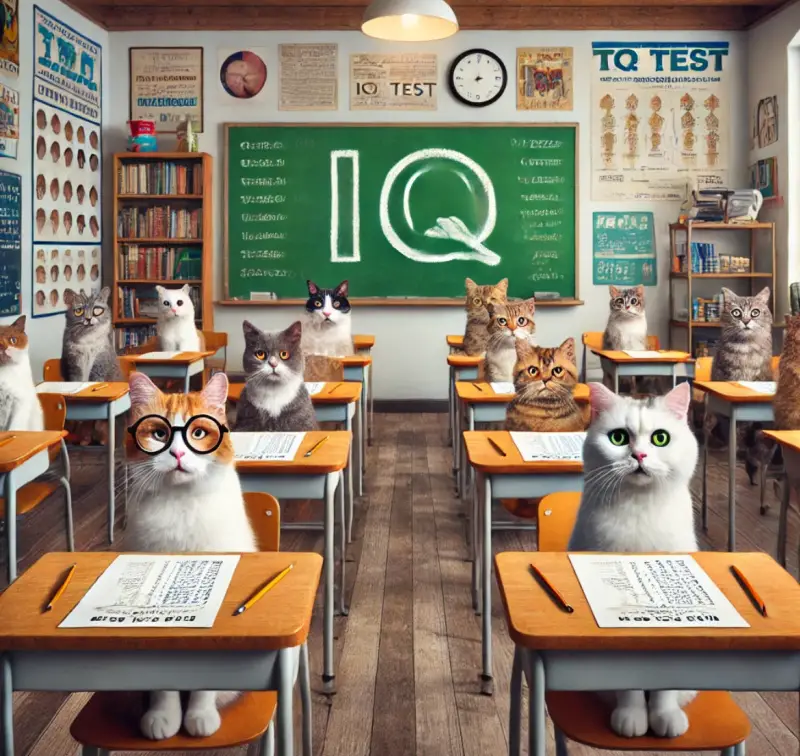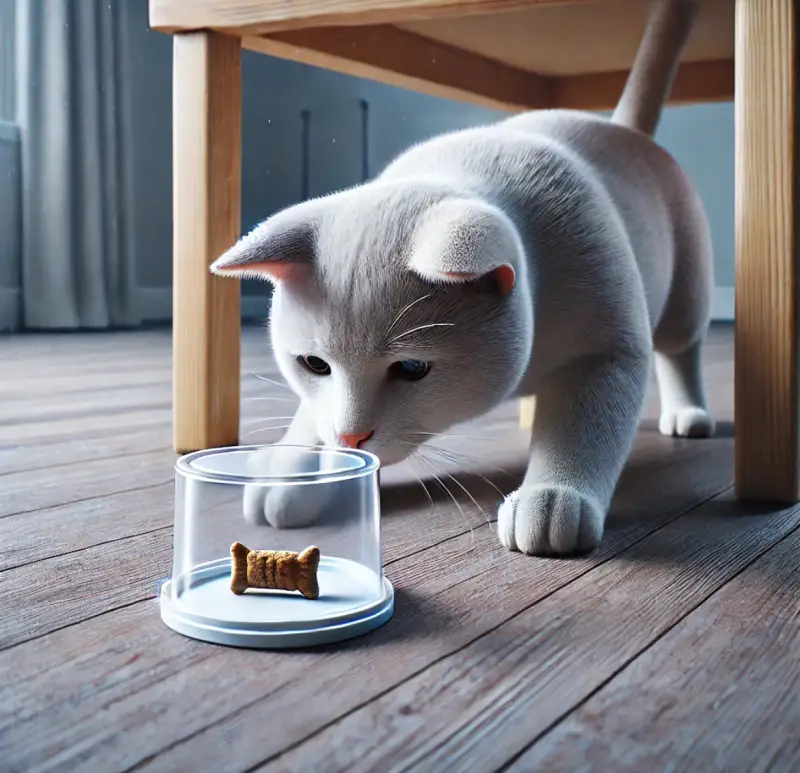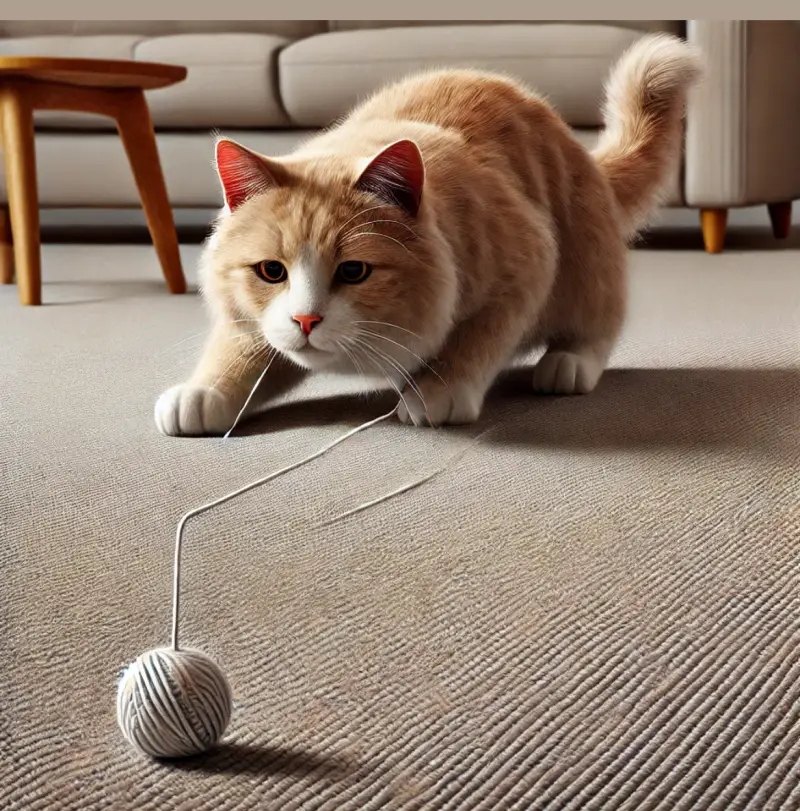Cats have long captivated humans with their entertaining behavior and independent spirit, leading many to wonder about the true extent of their intelligence.
In this post we offer six simple tests that a cat owner can do at home to get a sense of their cat’s intelligence. These tests can help assess various aspects of a cat’s problem-solving abilities, memory, and adaptability.
While often seen as aloof and inscrutable, cats possess a remarkable ability to learn, adapt, and interact with their environment in ways that reveal a deep-seated cognitive prowess. From problem-solving skills and memory retention to social interactions and communication, cat intelligence is a multifaceted phenomenon that continues to intrigue pet owners and scientists alike.
Try these simple tests on your cat(s) to determine their cleverness. These tests are meant to be fun and engaging for both you and your cat, so keep the environment positive and stress-free. Enjoy!
1. The Treat Test
Objective: Assess problem-solving skills and learning ability.
Materials Needed:
- A treat your cat likes.
- A small, clear plastic container or a cup.
Procedure:
- Place the treat under the container while your cat is watching.
- Observe how your cat tries to get the treat.
- A smart cat will typically try to figure out how to knock over or move the container to get the treat.
2. The String Test
Objective: Test memory and tracking skills.
Materials Needed:
- A piece of string or yarn.
Procedure:
- Drag the string across the floor slowly, allowing your cat to watch it.
- Hide the string under a blanket or behind a piece of furniture while your cat is watching.
- Observe if your cat remembers where the string was hidden and tries to retrieve it.
3. The Cup Game
Objective: Assess memory and problem-solving abilities.
Materials Needed:
- Three cups.
- A treat or small toy.
Procedure:
- Place the treat under one of the cups while your cat is watching.
- Shuffle the cups around a few times.
- See if your cat can track the cup with the treat and tries to get it.
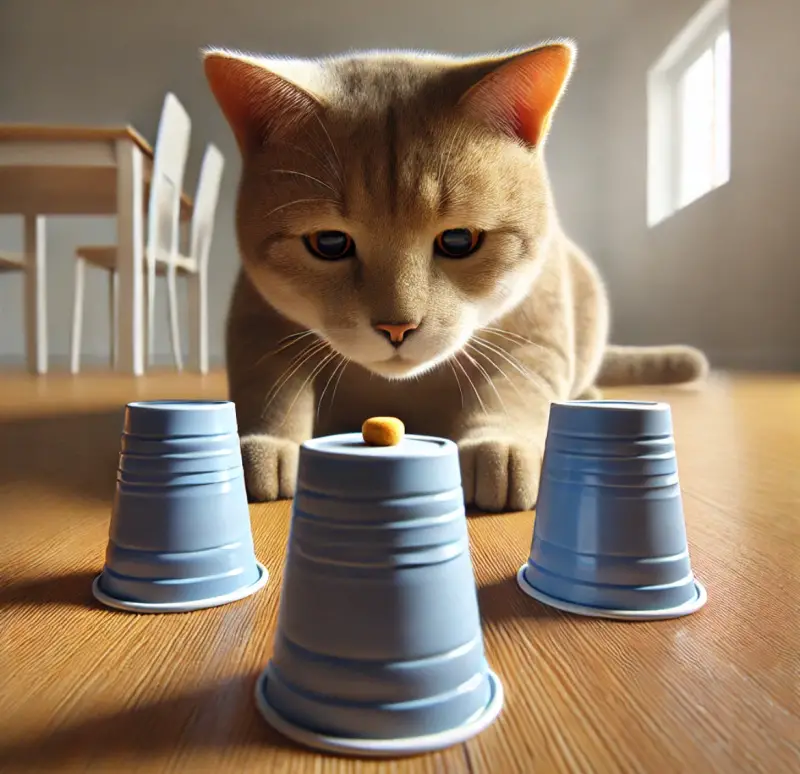
4. The Box Test
Objective: Test curiosity and problem-solving skills.
Materials Needed:
- An empty cardboard box.
- A treat or favorite toy.
Procedure:
- Place the treat or toy inside the box while your cat is watching.
- Close the box, leaving it slightly open so your cat can access it with some effort.
- Observe how your cat attempts to get the treat or toy out of the box.
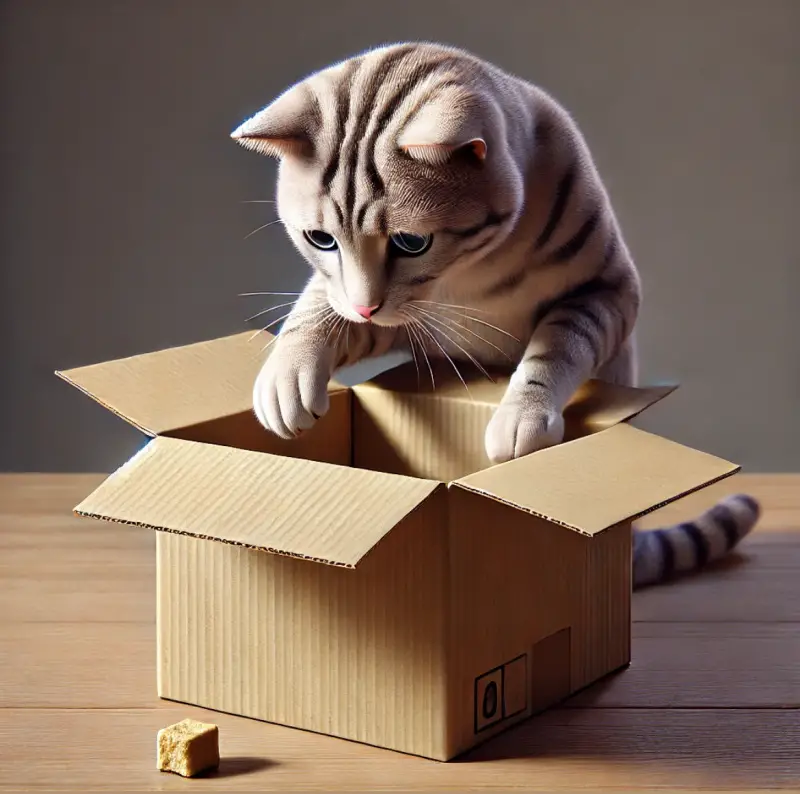
5. Puzzle Feeder
Objective: Assess problem-solving skills and adaptability.
Materials Needed:
- A puzzle feeder or a DIY version using a muffin tin and tennis balls.
- Treats or kibble.
Procedure:
- Place treats or kibble inside the compartments of the puzzle feeder or under the tennis balls in the muffin tin.
- Observe how your cat works to get the food out of the puzzle feeder.

6. Mirror Test
Objective: Test self-awareness (note: not all animals pass this test, including many smart species).
Materials Needed:
- A mirror.
Procedure:
- Place the mirror in front of your cat.
- Observe your cat’s reaction. Does it recognize itself, or does it think it’s another cat?

Observations and Interpretations
While these tests can provide insight into your cat’s intelligence, it’s important to remember that intelligence can manifest in different ways. Some cats might excel in problem-solving tasks, while others might show their smarts through social interactions or adaptability. Additionally, a cat’s motivation and personality play significant roles in how they perform on these tests.
Got a bored cat? Check out this clever interactive gravity ball designed to mimic prey movements and stimulate/entertain your cat! Endless fun and a great way to reduce boredom related behaviors. Oh, and it’s USB rechargeable which means no more costly batteries. Check it out here => Interactive Cat Ball.
